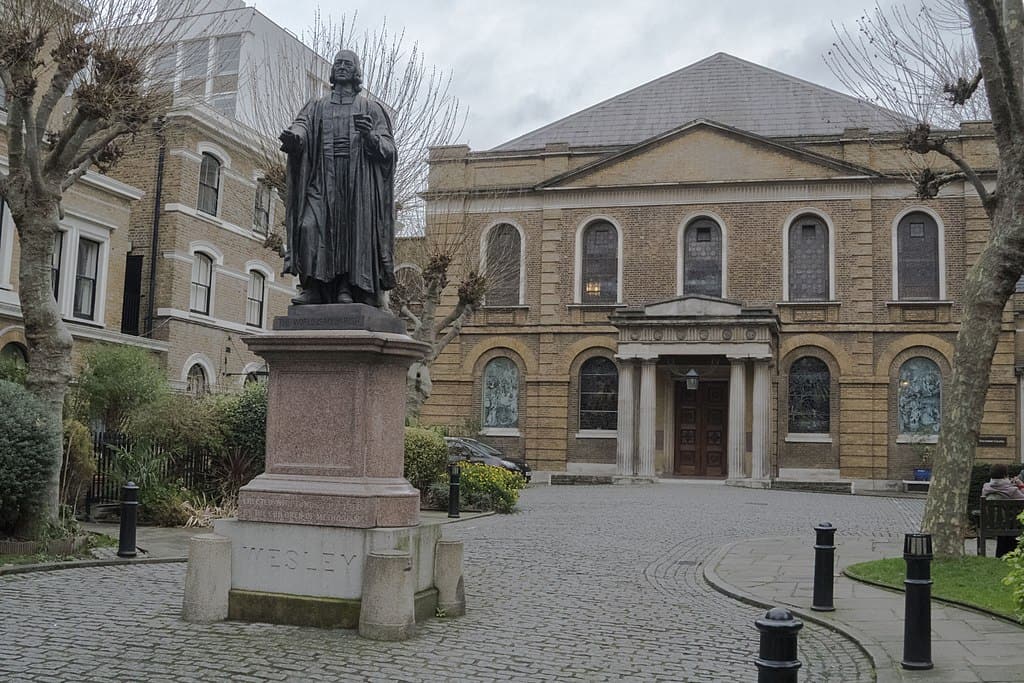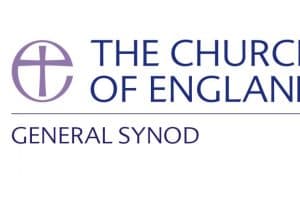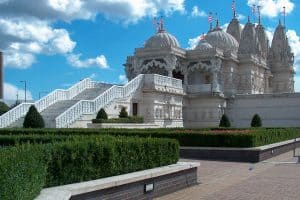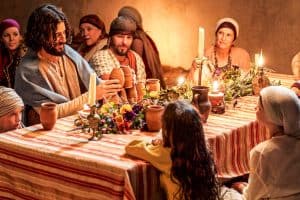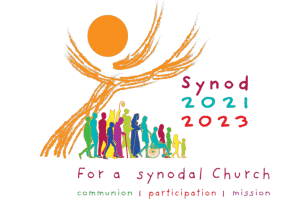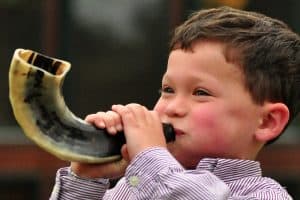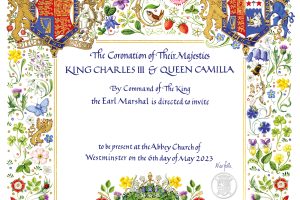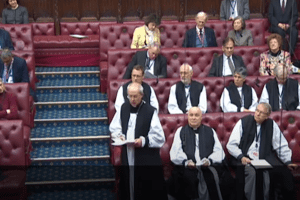By Sarah Harvey
The Methodist movement was born of a Christian revival sparked by the 18th-century Church of England cleric John Wesley, who preached to ordinary people outside the church. It blossomed into its own denomination after Wesley’s death and is now widespread across the world
Key facts
The Methodist movement was established in the 18th century by John Wesley (1703-91), a clergyman of the Church of England. He wrote more than 400 publications on a wide range of topics including theology, medicine, social reform and marriage. His Forty-Four Sermons and Notes on the New Testament remain key texts in the church.
John’s brother, Charles (1707-88), was also an important figure in the movement, and he wrote more than 6,000 hymns, including Hark! The Herald Angels Sing.
While John Wesley critiqued some of the rules and authority of the Anglican church, he did not seek to establish a separate denomination — this happened shortly after his death. Wesley sought rather to establish a revival movement through “field preaching”, taking his message throughout Britain and later establishing yearly conferences.
Wesley’s main message was that God’s love is for all — that no one is beyond God’s love and that we can be made perfect in love of God.
The Methodist Church has been active in working with the poor and marginalised and Methodists were influential in establishing the first trade unions in the UK. Wesley supported the movement against slavery and supported prison reform. Later Methodists increasingly took up issues of gender and racial justice.
Wesley’s favouring of women preachers was perpetuated by more radical strands of Methodism in the 19th century, but the first women presbyters were not ordained until 1974.
It considers itself a “church at the margins”, reaching the most disadvantaged in society, through its “mission alongside the poor”.
How did Methodism begin?
John and Charles Wesley, while students at Oxford University, founded a small group for prayer and Bible study, and charitable work. Other students called it “the holy club” and members “methodists”, for their methodical approach to their relationship with God and Bible study. This name stuck. George Whitefield, also a member of the group, popularised “field preaching”, inspired by the Welsh revival movement.
The brothers spent two years (1735-37) as missionaries in Georgia, America, where John was inspired by the piety of Moravians, a development of continental European pietism. In 1738, on their return to the UK, John had what is known as the “Aldersgate experience”, during a meeting in London while Martin Luther’s preface to the commentary to the Letter of Paul to the Romans was being read.
John reported that he “felt his heart strangely warmed” and felt a trust in “Christ alone for salvation”. Wesley then began his field preaching, inspired by Whitefield, reaching out to the poor working classes.
In the early 19th century, Hugh Bourne led an offshoot movement called the Primitive Methodists, who had a greater emphasis on the role of lay people and women, on simplicity of chapels and worship and on reaching the rural, rather than urban, poor.
The three main strands of Methodism (Wesleyan, Primitive and United) united in 1932, leading to the creation of the Methodist Church in Britain.
How did it spread beyond Britain?
Methodism has spread globally, throughout the Caribbean and Americas, Africa, Asia and Australasia, particularly with missionaries in the colonial period, and there are now more than 90 partner churches worldwide.
In the United States, the largest Methodist denomination is the United Methodist Church, which is separate from the church in the UK and has bishops, which British Methodists do not.
Wesley ordained the first ministers who travelled to America — against the rules and norms of the Anglican church. Two ministers, Francis Asbury and Thomas Coke, became superintendents and later referred to themselves as bishops.
How is the church organised?
The first Methodists were organised into local societies, further divided into “classes” that met weekly for Bible study, prayer and spiritual and pastoral support. In 1744, John Wesley established the annual conference as a way for the societies to come together, with the “Yearly Conference of the People called Methodists” established in 1784.
After Wesley’s death in 1791, leadership passed to the Methodist Conference, with an annual president elected from the ministry. Since 1932, a lay person has been elected annually to serve as vice-president. The Methodist Conference meets annually in June or July “to discuss matters affecting the life of the church, the nation and the world”. The Methodist Council meets quarterly to undertake work on behalf of the conference.
The church is “connectional”, rather than congregational, meaning that “the whole church acts and decides together”. It is divided into geographical districts that are further divided into circuits. The circuit is a group of churches served by a team of ministers, who travel between the churches.
Ordained ministers within the Methodist Church are deacons and presbyters — considered “equal but different”. They are not considered a priesthood as the church holds to the doctrine of “the priesthood of all believers”.
Presbyters are ministers of the word and sacraments; deacons are called to “witness through service”. Both fulfil pastoral roles and both roles are open to women. Laypeople are of utmost importance in the church: stewards have responsibility for local buildings and finances and local preachers are laypeople trained to preach and lead worship.
The church in Britain is also a member of a number of international organisations including the World Methodist Council, World Council of Churches, World Federation of Methodist and Uniting Women. It has a number of associated charities including: All We Can (previously Methodist Relief and Development Fund); Action for Children and Methodist Homes, the UK’s largest charity care provider for the elderly.
In 2020, there were 60 million “committed members” of the church worldwide and a further 20 million adherents. There were 170,000 committed members in Britain, making it the country’s fourth-largest Christian denomination. That is a drop from 800,000 in 1906 and 600,000 in 1980.
Most Methodists in the UK are of retirement age, and there are twice as many women as men.
What do Methodists believe?
The Methodist Church sees itself as part of the One Holy Catholic and Apostolic Church and as such shares the basic tenets of Christianity with all the other major denominations. It also accepts the Protestant Reformation and the doctrines of the evangelical faith. Methodists believe that all can be saved — no one is beyond God’s love and all are equally made in the image of God.
A traditional summary of Methodist teaching is: “All need to be saved. All may be saved. All may know themselves saved. All may be saved to the uttermost.” These “Four Alls” encompass the doctrines of original sin, universal salvation, assurance, and Christian perfection.
Christian perfection — sometimes called sanctification — is the belief that some believers can be made perfect before their death and resurrection. The belief that salvation is available to all is sometimes described as an Arminian view of salvation (after the Dutch theologian, Jacobus Arminius, 1560-1609), as opposed to a Calvinist view (after the French theologian, John Calvin, 1509-64), which taught predestination, that God choses an elect to be saved.
Methodists also stress the importance of the Methodist Quadrilateral — a fourfold approach to learning and living their faith: scripture, tradition, reason and experience (the personal experience of God’s grace in their lives). However, Methodism is not just a matter of personal belief: members should practise “holy living” — a commitment to social justice, to meet and worship with other Christians (“social holiness”), and evangelism (see also practices).
How do Methodists practise their faith?
Methodists live out their discipleship in four ways: worship, learning and caring, service and evangelism. Worship is fundamental to the Methodist Church. Services take place on a Sunday and include holy communion, also known as the Eucharist or the Lord’s Supper. Methodists recognise two sacraments: the Eucharist and baptism. The church is committed to evangelism — spreading the “good news” to make new disciples.
Hymn singing is central in Methodist worship. The latest authorised hymnbook is called Singing the Faith. Methodists practise regular prayer and Bible reading.
Methodists hold an annual covenant service (in January or September) in which members affirm their commitment to God by reciting the Methodist Covenant Prayer.
It is important for Methodists to engage in service to others, including challenging social injustices. The church has a long history of engagement in social reform which continues today. The public issues pages of the church’s website include activities around peace-making, climate change, ethical investment, housing and poverty, and social issues including alcohol, gambling and pornography. There are 65 state-funded and 14 independent Methodist schools in England and Wales.
Some Methodists allied themselves to the 19th-century temperance movement and advocated total abstinence from alcohol. Today, this is a matter for the individual.
Contemporary issues
The Methodist Church can generally be considered progressive in its social outlook: from its outset it has sought to reach the marginalised and it took an early stance on gender and racial equality. It seeks to be an inclusive church.
It welcomes LGBTQ+ people into the church and the ministry. However, the issue of same-sex partnerships is still being reflected upon. At present, same-sex marriages or civil partnerships may not be solemnised. The church says: “Marriage is a gift of God and that it is God’s intention that a marriage should be a lifelong union in body, mind and spirit of one man and one woman.” However, a marriage and relationships task group has been established to reflect further on whether beliefs and practices should change. A decision is due in 2021.
The church is opposed to assisted suicide and euthanasia.
Methodists are involved in interfaith as well as ecumenical activities. The church is a member of Churches Together in Britain and Ireland. Since 2003, the Methodist Church and the Anglican Church have had a covenant relationship that affirms their shared history and theologies — that both are “true churches”. In 2019, the latest round of negotiations produced a blueprint for an even closer sharing of ministries (which would have included the ability for Methodist ministers to hold communion services in Anglican churches and vice versa). However, this encountered opposition at the Church of England’s governing body the General Synod and was sent away for further work.
Dr Sarah Harvey is senior research officer at Inform, an independent, educational charity based at King’s College London, which provides information about minority religious, spiritual and political movements
Contacts
Robert Colls, professor of cultural history, De Montfort University, Leicester
The Rev Dr Martin Wellings, superintendent minister of the Barnet & Queensbury Circuit, London
William Gibson, professor of ecclesiastical history, Oxford Brookes University
Academic resources
The Methodist Archives and Research Centre at the John Rylands University Library, Manchester
The Manchester Wesley Research Centre
The Oxford Centre for Methodism and Church History at Oxford Brookes University
The Methodist Missionary Society archives at the School of Oriental and African Studies University of London
Further reading
Abraham, William J and Kirby, James E eds. (2009) The Oxford Handbook of Methodist Studies. Oxford University Press.
Bebbington, David (1989) Evangelicalism in Modern Britain: A History from the 1730s to the 1980s. Routledge
Gibson, William, Forsaith, Peter and Wellings, Martin (2013). The Ashgate Research Companion to World Methodism. Ashgate
Heitzenrater, Richard P. (2013) Wesley and the People Called Methodists. Abingdon Press
Hempton, D. (2005) Methodism: Empire of The Spirit. Yale University Press
Maddox, R. L. & J. E. Vickers (eds) (2010) The Cambridge Companion to John Wesley. Cambridge University Press
Rack, Henry D. (1992) Reasonable Enthusiast: John Wesley and the Rise of Methodism. Epworth Press.
Vickers, John A. (2002) A Dictionary of Methodism in Britain and Ireland. Epworth Press. Available online at dmbi.online

